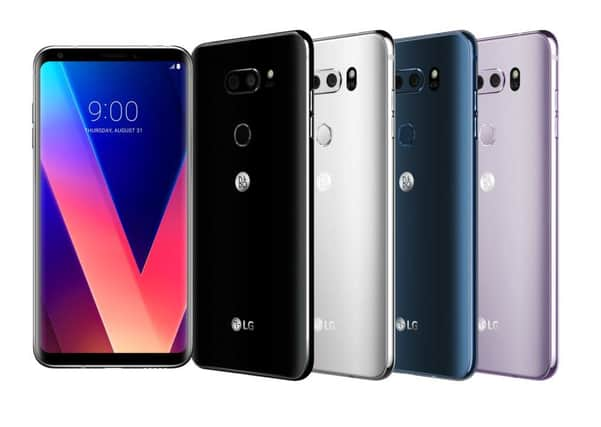LG's new V30 is tremendous - but here's why you shouldn't buy it


LG’s V30 model, which is just reaching the shelves and which carries a price tag of around £700, is at the vanguard of the new standard, with a six-inch, Samsung-style screen that wraps around the sides and a video camera said to offer “movie-like” quality.
The V30 is only slightly smaller than some tablets, but because there is almost no bezel surrounding the screen, it fits comfortably into the pocket, if not the hand. It’s also deceptively light.
Advertisement
Hide AdAdvertisement
Hide AdThe screen is astonishingly well detailed, using the same HDR technology as many TV sets and boasting a more-than-high-definition resolution of 2880 x 1440 pixels. You get TV-style options for different picture modes, and there is as much memory as a computer.
The back of the phone is as impressive as the front. It’s covered by protective glass, and there are two lenses, one with a wide aperture and optical image stabilisation, the other with a wide-angle, 120-degree field of view. Twin lens cameras (not counting the selfie lens on the front) are common even on mid-range phones now, and the potential for creative photography is limitless. You don’t choose between the lenses; the phone fires them both at once and blends the results into a single image.
But it is the ability to shoot 4K movies and then colour-grade them that takes this handset to a new level. Colour grading is what film and TV companies do to footage before they release it, and until recently it took an exceptionally powerful computer to achieve anything like the same results - so LG’s inclusion of 15 pre-made filters in a phone is something of a breakthrough.
However, for serious movie makers, a phone will never replace a camera. Apart from anything else, there is no optical zoom lens.
Advertisement
Hide AdAdvertisement
Hide AdSmartphones are also music players, and LG’s inclusion of a quad digital analogue converter and a pair of Bang & Olufsen earbuds makes the V30 a particularly good one. All phones include some sort of digital converter, but LG’s dedicated fourfold processor takes this handset into hi-fi buffs’ territory.
LG does not have the top end of the market to itself. Samsung’s Galaxy Note 8, at an eye watering £870, is bigger still at 6.3 inches, and comes with even more memory. It also has an optical zoom lens, though with nothing like the range of a standalone pocket camera, and optical image stabilisation on both its rear lenses. That ought to make it impossible to take an out-of-focus picture.
Next month, Google will up the ante still further when it launches the second version of its Pixel Phone, the current model of which is smaller than the V30 but has similarly impressive processing power. Prices for the current Pixel start at £600.
There is no question that these are desirable phones. Yet I don’t recommend you do go out and buy any of them, even if you can find one on a tariff with a low upfront cost. All of the features LG, Samsung and Google have reserved for today’s flagship models will migrate to the middle market in a year or two. They won’t necessarily all be found on the same handset, but you will be able to choose those you most want for less than half of today’s prices.